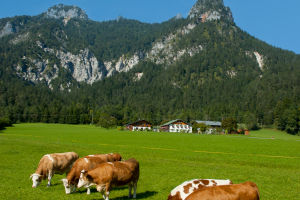India, a land rich in cultural heritage, has long been associated with its love affair with peacocks. These magnificent birds, with their resplendent plumage and graceful demeanor, have captured the hearts of Indians for centuries. Let’s delve into the depths of India's admiration for peacocks and explore the reasons behind this profound connection.
Cultural and Symbolic Significance:
Peacocks hold a special place in Indian culture and mythology. They are revered as a symbol of beauty, grace, and spirituality. In Hindu mythology, the peacock is considered the sacred mount of Lord Kartikeya, the god of victory. The bird's mesmerizing dance, with its feathers spread wide, is believed to be a symbol of divine love and cosmic creation.
Peacocks in Art and Architecture:
Peacock motifs can be found abundantly in Indian art and architecture. Intricately carved peacock designs adorn ancient temples, palaces, and monuments across the country. The famous Peacock Throne of the Mughal emperor Shah Jahan, with its jeweled peacock figures, is a testament to the bird's significance in Indian regal history. The artistry of peacock-inspired designs is also reflected in textiles, paintings, jewelry, and various handicrafts.
National Bird of India:
The peacock holds the esteemed title of being the national bird of India. This recognition further exemplifies the admiration and pride Indians have for these birds. The designation as the national bird was not only due to its aesthetic appeal but also because of its representation of integrity, beauty, and resilience, qualities that resonate with the Indian spirit.
Festivals and Folklore Celebrating Peacocks:
India's vibrant festival calendar is filled with celebrations honoring peacocks. One such festival is Makar Sankranti, where people in several states fly kites adorned with colorful peacock designs. The festival of Teej, primarily celebrated by women, often involves dancing and singing songs praising the beauty of peacocks. Peacocks are also prominently featured in various regional folklore, where they are depicted as symbols of romance, love, and fertility.
Conservation Efforts and Protection:
Recognizing the importance of preserving the country's rich biodiversity, India has undertaken several conservation efforts to protect the peacock population. The Indian Wildlife Protection Act of 1972 grants legal protection to peacocks, making it illegal to harm or trade them. The government, along with various non-profit organizations, has taken initiatives to conserve peacock habitats and raise awareness about their conservation.
Peacocks in Literature and Poetry:
Indian literature and poetry have beautifully captured the essence of peacocks. From ancient Sanskrit texts to modern-day literature, peacocks are often described as symbols of beauty, elegance, and transcendence. Renowned poets like Rabindranath Tagore and Sarojini Naidu have immortalized the allure of peacocks through their verses, igniting the imagination of readers and further deepening the love for these magnificent birds.
Tourist Attractions and Peacock Sanctuaries:
India's diverse wildlife sanctuaries and national parks offer opportunities to witness peacocks in their natural habitats. Places like Rajasthan's Keoladeo National Park, Gujarat's Nalsarovar Bird Sanctuary, and Uttar Pradesh's Bharatpur Bird Sanctuary are popular destinations for bird enthusiasts, where peacocks roam freely, displaying their majestic plumage.
The love that Indians harbor for peacocks runs deep within their cultural and spiritual fabric. From mythology and art to festivals and conservation efforts, the peacock holds a cherished place in India's collective consciousness.


